- News
- City News
- bhopal News
- ‘Foreigner’ with skull cap unearthed in 6th-century Vishnu temple in MP
Trending
This story is from March 26, 2019
‘Foreigner’ with skull cap unearthed in 6th-century Vishnu temple in MP
The 1,300-year-old piece has puzzled researchers which depicts a mysterious ‘foreign face’ engraved on a brick in a 6th-century temple in MP’s Singrauli. The find has caused excitement among archaeologists. The engraving — of a bearded man in ‘foreign attire’ and a skull cap — was found in an early Kalachuri Dynasty temple at an ASI dig site in Nagwa area.
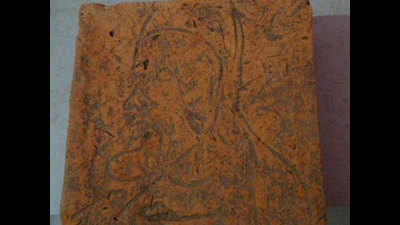
Key Highlights
- The engraving, of a bearded man in ‘foreign attire’ and a skull cap, was found in an early Kalachuri Dynasty temple at an ASI dig site in Nagwa area.
- Researchers have no idea whose face it depicts.
- Among the other rare finds is an idol of Vishnu, which has a drum tied to the waist.
BHOPAL: A mysterious ‘foreign face’ discovered engraved on a brick in a 6th century temple in MP’s Singrauli has triggered a sensation among archaeologists. The engraving — of a bearded man in ‘foreign attire’ and a skull cap — was found in an early Kalachuri Dynasty temple at an ASI dig site in Nagwa area.
This 1,300-year-old piece has puzzled researchers, who have no idea whose face it depicts.“This is striking, as it means that a foreigner was allowed into the religious activities of the day. Such examples are extremely rare,” superintending archaeologist Dr Madhulika Samanta, who is leading the excavation, told TOI. “Clothes of this type were not worn by people of the region in those days. The drawing on the brick shows the presence of such a person at a Vishnu shrine. The attire and features indicate a resemblance to such things found in West Asia,” Dr Madhulika added.

The closest such example is the famous ‘Heliodorus Pillar’ in Vidisha, she said. The 6.5m stone column was built around 113 BCE in Vidisha’s Besnagar — around 11km from the Sanchi Stupa — by Heliodorus, an ambassador of the Indo-Greek king Antialcidas of Taxila to the court of the Shunga king Agabhadra. Heliodorus is the first recorded foreigner to convert to Vaishnavism, Samanta added.
 Archaeologists believe this site is a treasure trove.
Archaeologists believe this site is a treasure trove.
That is not the only stunning find at this site, which was discovered by chance in July 2018 when ASI were alerted about “villagers carrying away bricks from a mound”. An ASI team that was at an excavation site nearby rushed over to find that the villagers were digging into the Garvagriha of an ancient Vishnu temple with spades, and carting away ‘bricks’.
The excavation of the Vishnu temple is now complete. What emerged from ages of dirt was a statue of Vishnu so unique that only a handful of such examples exist. It has a drum tied to the waist of Vishnu, and the left hand of the statue resting on it in a manner as if He were playing it. It probably indicates the influence of the ‘Matta Mayuri’ cult — popular at that time — which propounded an amalgamation of other cults, such as Vaishnava and Shakta, within the Shaiva cult, say ASI officials.
 The statue has a Shankha and Chakra but no Gada or Padma.
The statue has a Shankha and Chakra but no Gada or Padma.
Also, the statue has a Shankha and Chakra but no Gada or Padma. Instead, Lord Vishnu is shown holding a ‘Beejapuraka’ (grapefruit). So far, ‘Vishnu with Beejapuraka’ images have been found from Pala Period (9th-10th Century CE), but this one is the oldest ever found, ASI officials say. A much more complex Shiva temple abuts this site, and the dig has shifted there.
 Another interesting find is a stone carved with ‘Ra’ and ‘La’ in Brahmi script of 1st-2nd Century CE.
Another interesting find is a stone carved with ‘Ra’ and ‘La’ in Brahmi script of 1st-2nd Century CE.
Another interesting find is a stone carved with ‘Ra’ and ‘La’ in Brahmi script of 1st-2nd Century CE. It was found 25cm below the surface. “This discovery stretches the antiquity of urbanisation of this area to at least 2,000 years ago,” said Rajesh Meher, assistant archaeologist, who was part of the team.
 When the team was exploring the area, it found several rock-cut caves.
When the team was exploring the area, it found several rock-cut caves.
The remains of this period cover an area of about 1 sqkm. The ASI team has detected four more buried temples. “The relics indicate the existence of a big city, which is rare in this region for the time. We have found several temples and monasteries of the early medieval period, but hardly any trace of big habitations such as this. There are very few such sites in India,” said Dr Samanta.
 Archaeologists believe there is another temple about 400m from these caves.
Archaeologists believe there is another temple about 400m from these caves.
When the team was exploring the area, it found several rock-cut caves around 1km from the Vishnu temple to the east. Dr Madhulika says the walls of the caves contain inscriptions of the 7th-8th Century. Archaeologists believe there is another temple about 400m from these caves and have laid two trenches there. One of these trenches has revealed two inter-connected rooms with doors and a floor beaten with lime-surkhi and capped by floor stones.

A plantation drive by the forest dept is likely to make the excavation work difficult.
Archaeologists believe this site is a treasure trove, but unfortunately a large part of it was destroyed when canals were dug by a power firm. Adding to the woes of archaeological investigators, the forest department has started planting saplings on the site, making it difficult for them to continue with their survey, said sources.
This 1,300-year-old piece has puzzled researchers, who have no idea whose face it depicts.“This is striking, as it means that a foreigner was allowed into the religious activities of the day. Such examples are extremely rare,” superintending archaeologist Dr Madhulika Samanta, who is leading the excavation, told TOI. “Clothes of this type were not worn by people of the region in those days. The drawing on the brick shows the presence of such a person at a Vishnu shrine. The attire and features indicate a resemblance to such things found in West Asia,” Dr Madhulika added.
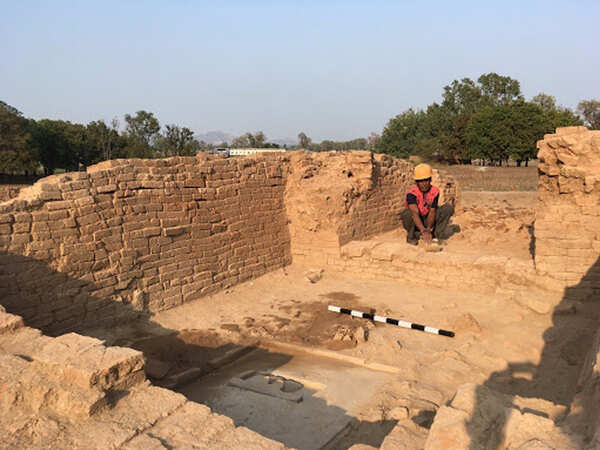
The excavation of the Vishnu temple is now complete.
The closest such example is the famous ‘Heliodorus Pillar’ in Vidisha, she said. The 6.5m stone column was built around 113 BCE in Vidisha’s Besnagar — around 11km from the Sanchi Stupa — by Heliodorus, an ambassador of the Indo-Greek king Antialcidas of Taxila to the court of the Shunga king Agabhadra. Heliodorus is the first recorded foreigner to convert to Vaishnavism, Samanta added.

That is not the only stunning find at this site, which was discovered by chance in July 2018 when ASI were alerted about “villagers carrying away bricks from a mound”. An ASI team that was at an excavation site nearby rushed over to find that the villagers were digging into the Garvagriha of an ancient Vishnu temple with spades, and carting away ‘bricks’.
The excavation of the Vishnu temple is now complete. What emerged from ages of dirt was a statue of Vishnu so unique that only a handful of such examples exist. It has a drum tied to the waist of Vishnu, and the left hand of the statue resting on it in a manner as if He were playing it. It probably indicates the influence of the ‘Matta Mayuri’ cult — popular at that time — which propounded an amalgamation of other cults, such as Vaishnava and Shakta, within the Shaiva cult, say ASI officials.
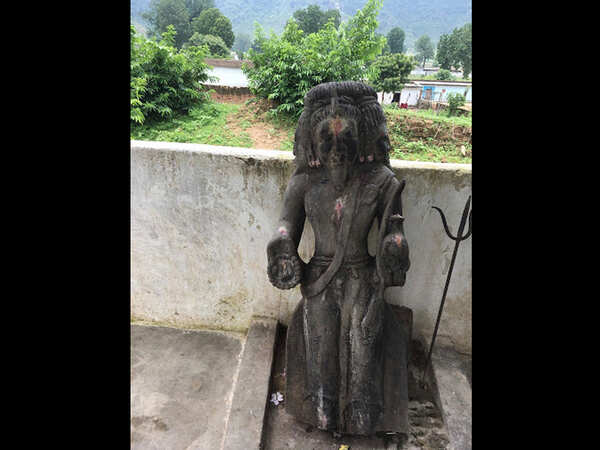
Also, the statue has a Shankha and Chakra but no Gada or Padma. Instead, Lord Vishnu is shown holding a ‘Beejapuraka’ (grapefruit). So far, ‘Vishnu with Beejapuraka’ images have been found from Pala Period (9th-10th Century CE), but this one is the oldest ever found, ASI officials say. A much more complex Shiva temple abuts this site, and the dig has shifted there.
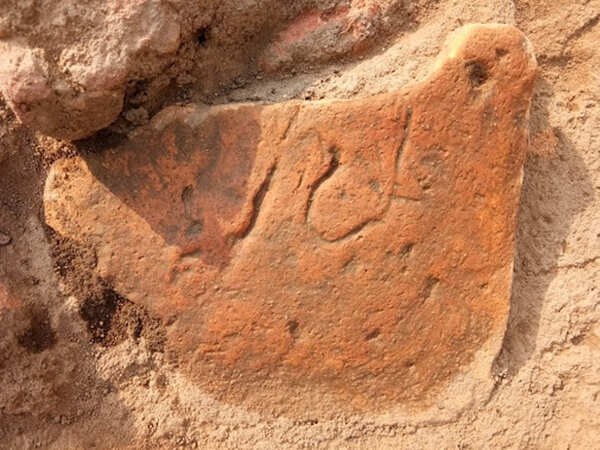
Another interesting find is a stone carved with ‘Ra’ and ‘La’ in Brahmi script of 1st-2nd Century CE. It was found 25cm below the surface. “This discovery stretches the antiquity of urbanisation of this area to at least 2,000 years ago,” said Rajesh Meher, assistant archaeologist, who was part of the team.
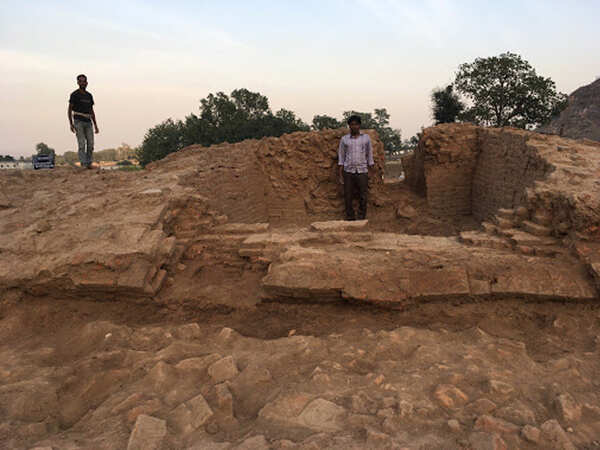
The remains of this period cover an area of about 1 sqkm. The ASI team has detected four more buried temples. “The relics indicate the existence of a big city, which is rare in this region for the time. We have found several temples and monasteries of the early medieval period, but hardly any trace of big habitations such as this. There are very few such sites in India,” said Dr Samanta.
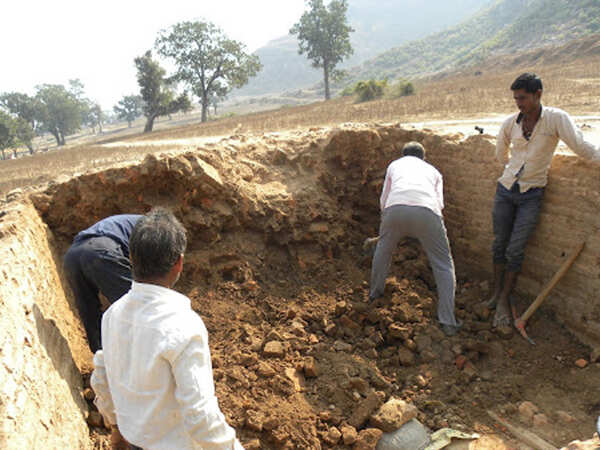
When the team was exploring the area, it found several rock-cut caves around 1km from the Vishnu temple to the east. Dr Madhulika says the walls of the caves contain inscriptions of the 7th-8th Century. Archaeologists believe there is another temple about 400m from these caves and have laid two trenches there. One of these trenches has revealed two inter-connected rooms with doors and a floor beaten with lime-surkhi and capped by floor stones.
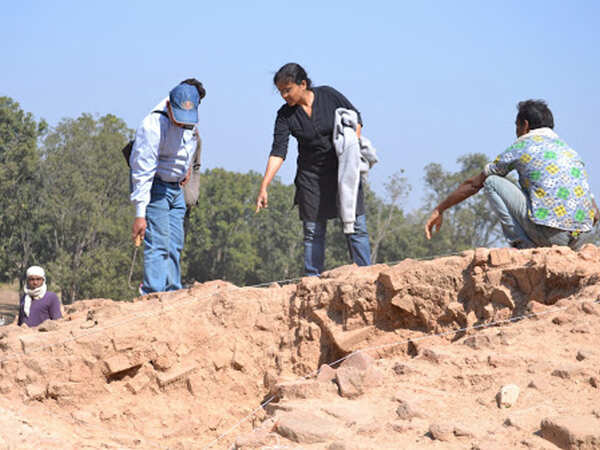
A plantation drive by the forest dept is likely to make the excavation work difficult.
Archaeologists believe this site is a treasure trove, but unfortunately a large part of it was destroyed when canals were dug by a power firm. Adding to the woes of archaeological investigators, the forest department has started planting saplings on the site, making it difficult for them to continue with their survey, said sources.
End of Article
FOLLOW US ON SOCIAL MEDIA










